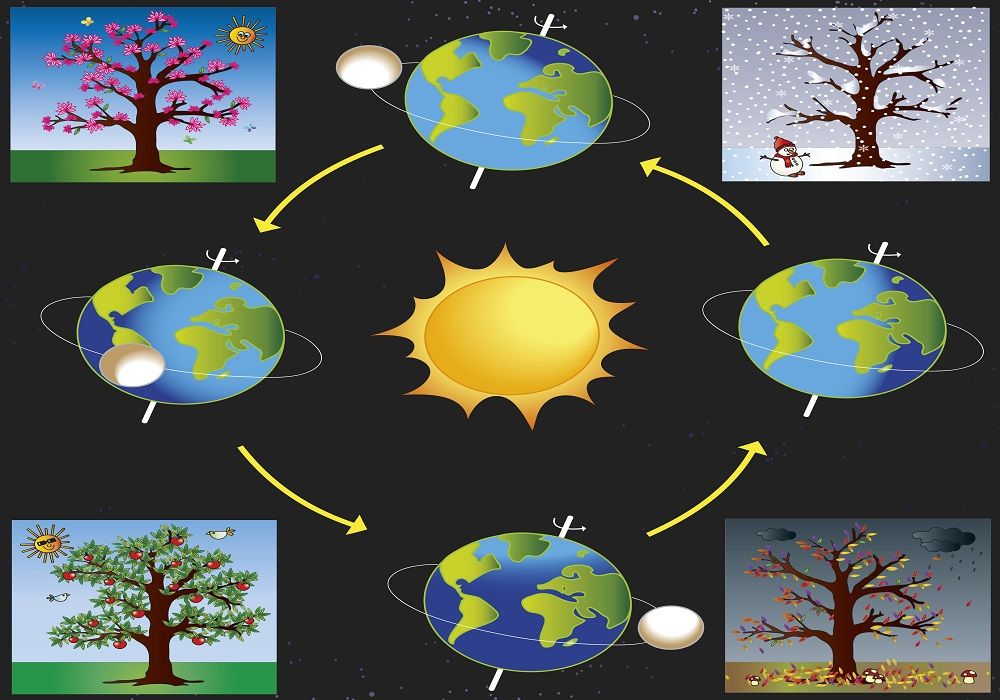A season is a period of the year characterized by special climatic conditions. Earth’s tilted axis causes the seasons. The Earth’s rotation axis is tilted relative to its orbital plane. Let’s learn how the four seasons occur.

The Phenomenon of the Four Seasons
We all care about the expected weather in our country, and we rely on the meteorological bulletin that changes according to countries and seasons. Those seasons are responsible for changing the weather and its volatility with the passage of months. There is spring, autumn, winter, and summer.
In order to understand how the seasons alternate, we must take a quick tour of space. The Earth, like the rest of the planets, revolves around the sun. There was an old belief that the Earth’s rotation and approach to the sun raise temperatures, and as it moves away, temperatures decrease and winter occurs. However, this explanation is neither scientific nor logical, as the phenomenon of the four seasons is linked to an astronomical phenomenon completely different from this belief.
It is known that the globe rotates on its axis, which is an imaginary line that connects the North Pole and the South Pole and is tilted at an angle of twenty-three and a half degrees. This tilt results in a difference in the angles of the sun’s rays falling on the surface of the globe and the accompanying difference in the amount of heat that reaches the surface of the globe, and the relationship between the angle of sun’s rays and the amount of heat that reaches the surface of the globe and the resulting phenomenon of the four seasons.
How Do Four Seasons Occur?
The four seasons (autumn, winter, spring, summer) occur due to the spin of the Earth’s axis at an angle of 23.4 degrees during its rotation around the sun, as it takes approximately 365 days to complete a full revolution, and the Earth rotates counterclockwise around its axis, resulting in a succession of Night and day.
It is worth noting that each hemisphere goes through a different season, when winter is in the northern hemisphere, summer is in the southern hemisphere and so on.
Summer Equinox and Winter Solstice
The summer equinox occurs when the sun’s rays are direct and perpendicular to the equator as a result of the tilt of the Earth’s axis, as the movement of the Earth affects the occurrence of the four seasons. The summer season occurs in the northern hemisphere when the greatest angle of inclination of the earth’s axis is towards the sun, i.e. around the 21st of June, while in the southern hemisphere summer occurs when the south pole tilts towards the sun, i.e. on the 22nd of December.
The winter solstice occurs when the sun is at its lowest or southernmost position in the northern hemisphere, and it also occurs on the shortest day of the year.
The Spring Equinox and the Autumnal Equinox
The spring equinox occurs when the length of day and night is equal, that is, when the sun is located directly above the equator, and in the period in which the sun’s annual path intersects with the equator. In the northern hemisphere, the vernal equinox occurs on September 22 or 23, when the sun moves south across the equator, and continues until the summer solstice on June 20 or 21 in the northern hemisphere.
The autumnal equinox occurs when the sun crosses from North to the south of the equator, where the length of night and day are equal, and autumn usually begins on the 22nd of September of each year.





